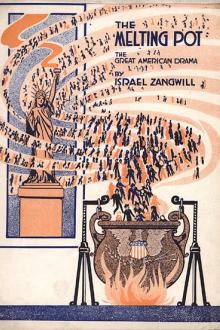No Modernism Without Lesbians, Diana Souhami [love books to read txt] 📗

- Author: Diana Souhami
Book online «No Modernism Without Lesbians, Diana Souhami [love books to read txt] 📗». Author Diana Souhami
She and Alice closed their Paris flat, loaded winter clothes, Picasso’s portrait of Gertrude and Cézanne’s portrait of Madame Cézanne into the car and headed for their country place in Bilignin. They could not find their passports when they packed. In a half-hearted attempt to leave for America, they drove to the consulate in Lyons to get new ones but there were queues so they did not wait. Then a neighbour advised them to stay, said they were known and liked and everybody would look after them. So even though they were Jewish and American and by 1940 Bilignin was in Vichy-occupied France, they stayed. ‘We always pass our wars in France,’ Gertrude said.
As the war progressed they became short of funds, so they drove to Switzerland and sold the portrait of Madame Cézanne in order to buy food on the black market. ‘We ate the Cézanne,’ Alice said. Bernard Faÿ, translator of The Autobiography of Alice B. Toklas into French, negotiated with Marshal Pétain, head of the Vichy regime that collaborated with the Axis powers, to ensure their safety. He also secured extra rations for them of bread and petrol. He had been appointed head of the French collaborationist government at Vichy and was responsible for hundreds of Jews being sent to concentration camps. At the war’s end, both Pétain and Faÿ were imprisoned for life as Nazi collaborators. Faÿ escaped to Switzerland. Pétain was exiled to the Île d’Yeu off the Atlantic coast. He died there in 1951.
Gertrude’s death
At the war’s end, Gertrude complained of tiredness and stomach pains. By December 1945 she had colitis and had lost weight. Her doctor told her to wear her corset differently. In April 1946, in great pain, she was taken to the American Hospital at Neuilly and was told she had cancer too advanced for surgery. She would not accept this stark news and insisted on an operation. She found a surgeon, Louis-Pasteur Vallery-Radot, grandson of Louis Pasteur, who agreed to operate on 27 July 1946, a Saturday. Alice wrote:
I sat next to her and she said to me early in the afternoon, What is the answer? I was silent. In that case, she said, what is the question? Then the whole afternoon was troubled, confused and very uncertain, and later in the afternoon they took her away on a wheeled stretcher to the operating room and I never saw her again.
Alice lived frugally for her remaining twenty-one years in a vain effort to keep Gertrude’s art collection intact, rather than selling even one painting to raise capital. In her will, she stipulated that she be buried in the same grave with Gertrude in Père-Lachaise cemetery but that her own name be engraved on the back of the tombstone, behind Gertrude to the end.
do you still love life?
A decade after the war, in a changed and diminished world, Janet Flanner, in Cannes with a friend, visited Picasso’s studio at his Villa La Californie for a viewing of his work. She said his salon was crowded with art works ‘like an auction room’. In the halcyon days in Paris, she and Picasso had seen each other often in the Café de Flore at the corner of place Saint-Germain, but had never spoken. Picasso met her with his arms outstretched and said:
‘You! Why didn’t you ever speak to me in the old days at the Flore? For years we saw each other and never spoke, until now. Are you just the same as you are? You look fine. Not a day older.’
‘Nor do you,’ Flanner said.
‘That’s true,’ Picasso said. ‘That’s the way you and I are. We don’t get older, we just get riper. Do you still love life the way you used to, and love people the way you did? I watched you and always wanted to know what you were thinking… Tell me, do you still love the human race, especially your best friends? Do you still love love?’
‘I do,’ Flanner replied, astonished by what he was asking.
‘And so do I,’ Picasso said, and laughed. ‘Oh we’re the great ones for that, you and I. Isn’t love the greatest refreshment in life?’
Then he hugged her.
Janet Flanner © Library of Congress / Getty Images
‘No one alive today can know which side’s dead men will win the war,’ Janet Flanner had written in 1939. When she met Picasso in Cannes, that particular ‘preposterous masculine fiction’ of war was finished with 60 million dead on the winning and losing sides, 22 million of them soldiers. The old days at the Café de Flore were gone, Sylvia Beach’s Shakespeare and Company was closed, Natalie’s Temple of Friendship empty, the graveyards fuller, the puffins on the Isle of Bryher fewer, the zany poems, experimental films and little magazines finished. But love of life and love continued to find its way. All over the world there were still lovers of love of every sort. There was no cut down on kissing between those with the impulse to kiss. Lesbians continued to find each other one way or another. There were people who were riper not older, wiser not meaner, kinder not more cruel. Lovers of the human race and friendship still loved life and lovers and love. And the lovers of love and refreshment in life still loved, and loved lovers and loved love.
1 William James was the first to recognise psychology as an independent discipline.
2 It arrived a year later.
3 Equivalent to about $100,000 in 2020.
4 A tax protest in 1791.
5 A student protest of 1766.
CITATIONS AND BOOKS
From the late 1980s





Comments (0)